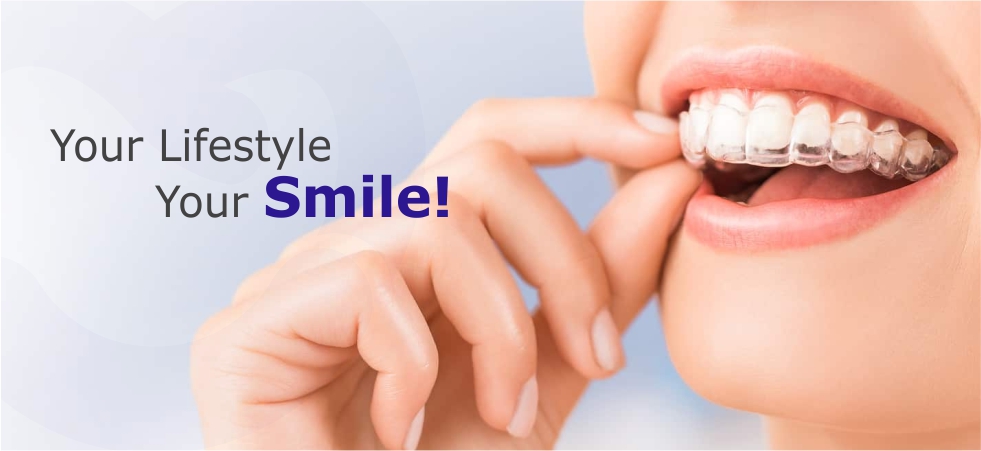
Teeth straightening has become popular in recent years. More people want to improve their smiles and boost their confidence. Straight teeth look better and make it easier to keep teeth clean and healthy.
Various methods are available to straighten teeth, such as traditional braces, invisible braces, and modern clear aligners like Invisalign. These options offer solutions for different needs and preferences, making it easier to achieve a perfect smile. Let's explore which option is more suitable.
Braces vs. Aligners: Definitions and Applications
Braces: Braces are a common method for straightening teeth. They consist of metal brackets and wires that gradually move teeth into the desired position. Braces effectively treat complex dental issues, such as misaligned bites, teeth crowding, crooked teeth, and gaps. Aligners: Aligners are clear, removable trays that fit over the teeth. Aligners help in shifting teeth into place gradually. Aligners are a popular choice because they are nearly invisible and easily removable while eating and cleaning. They are best for mild to moderate teeth alignment issues.
What's the Difference Between Clear Aligners and Metal Braces?
1. Appearance:
- Clear Aligners: Virtually invisible, made of clear plastic.
- Traditional Braces: Visible metal brackets and wires.
2. Comfort:
- Clear Aligners: Smooth plastic, less likely to irritate gums and cheeks.
- Traditional Braces: Metal parts can cause discomfort and irritation.
3. Ease of Removal:
- Clear Aligners: Removable, allowing for easier eating, brushing, and flossing.
- Traditional Braces: Fixed in place, non-removable, until treatment is complete.
4. Treatment Duration:
- Clear Aligners: Often require a shorter treatment time, but varies by case.
- Traditional Braces: Generally require longer treatment time, depending on the complexity.
5. Maintenance:
- Clear Aligners: These need regular cleaning and should be kept in a safe place when not worn.
- Traditional Braces: Require diligent brushing and flossing to maintain oral hygiene.
6. Food Restrictions:
- Clear Aligners: No dietary restrictions, as they can be removed during meals.
- Traditional Braces: Certain foods must be avoided to prevent damage to brackets and wires.
7. Adjustments:
- Clear Aligners: New aligners are provided every few weeks to gradually move teeth.
- Traditional Braces: Regular adjustments by the orthodontist to tighten wires and move teeth.
8. Suitable for:
- Clear Aligners: Best for mild to moderate orthodontic issues.
- Traditional Braces: Effective for a wide range of orthodontic problems, including severe cases.
9. Cost:
- Clear Aligners: Generally more expensive, but prices vary.
- Traditional Braces: Usually less expensive, but costs can vary based on treatment complexity.
10. Follow-Up Visits:
- Clear Aligners: Fewer office visits, as aligners are replaced at home.
- Traditional Braces: Need regular visits for adjustments and maintenance.
Advantages and Drawbacks
1) Clear Aligners
Advantages:
- Nearly invisible and aesthetically pleasing.
- Comfortable with no metal components.
- Removable for eating and oral hygiene.
Drawbacks:
- More expensive.
- Requires a disciplined wearing schedule.
- Not suitable for severe cases.
2) Traditional Braces
Advantages:
- Effective for a wide range of orthodontic issues.
- Generally less expensive.
- No need to keep track of wearing them
Drawbacks:
- Visible and can be uncomfortable.
- Requires dietary restrictions and careful cleaning.
- Regular adjustments needed.
The Teeth Alignment Process for a Perfect Smile
Teeth alignment involves several key steps to achieve a straight and healthy smile. It begins with an initial consultation with an orthodontist or dentist, where you discuss your concerns and goals. The next step is a thorough examination, including X-rays and impressions, to create a personalized treatment plan. Based on this plan, you choose between metal braces or invisible aligners.
Your dentist monitors your progress and makes any necessary changes to the treatment plan. Once the alignment process completes, your dentist provides retainers to maintain the new position of your teeth. Regular follow-up visits help ensure long-term success and address any issues.
Factors to Consider: Which Teeth Alignment Option is Right for You?
- Aesthetic Preferences: Clear aligners are less noticeable compared to traditional metal braces.
- Treatment Duration: Aligners often provide faster results than braces.
- Comfort and Convenience: Aligners are removable and generally more comfortable than braces.
- Effectiveness: Braces can handle more complex alignment issues than aligners.
- Cost: Aligners typically cost more than traditional braces.
- Lifestyle Impact: Aligners offer flexibility with fewer dietary restrictions compared to braces.
Which Teeth Aligning Procedure is More Effective?
When choosing between teeth aligning procedures, effectiveness is a key factor. Here’s how different options generally compare:
- Traditional Braces: Braces are highly effective for treating complex alignment issues, such as severe overcrowding, gaps, and misalignment. They provide precise adjustments over time and are suitable for a wide range of orthodontic conditions.
- Clear Aligners: Aligners are effective for treating mild to moderate alignment issues. They offer a discreet treatment option and are suitable for those with less severe dental issues.
Note - The effectiveness of aligners depends on patient compliance and the complexity of the alignment required.
How your doctor chooses the best teeth straightening treatment for you
Here’s how your doctor decides the best teeth-aligning option for you:
- Check Alignment Issues: The doctor will look at how severe your alignment problems are to choose the right treatment.
- Review Dental Health: They’ll check the health of your teeth and gums to find a suitable option.
- Consider Your Preferences: If you prefer a less noticeable treatment, clear aligners are the ideal choice. For more complex issues, traditional braces might be better.
- Discuss Goals: You’ll discuss what you want to achieve with your treatment to make sure the choice meets your needs.
- Look at Treatment Time: The doctor will consider how long the treatment will take and whether you’re okay with the time commitment.
These steps help the doctor pick the best teeth straightening treatment procedure for you.
In conclusion, both clear aligners and traditional braces offer effective solutions for teeth straightening. However, each method comes with its own set of benefits and considerations. Choosing the right method depends on individual needs, preferences, and the complexity of the alignment required. Understanding the benefits of clear aligners, differences, and key factors, duration, and cost will help you make a decision.
If you're seeking effective teeth straightening solutions in Belgaum, choose One Dentall. Our expert team provides personalized care with advanced techniques to help you achieve a perfect smile. Visit us for tailored treatments and exceptional results.
FAQs
Yes, clear aligners are effective for treating mild to moderate teeth alignment issues.
No, proper teeth straightening should not weaken teeth when performed by a qualified professional.
Both clear aligners and braces gradually move teeth into the desired position using gentle, controlled forces.
Clear aligners are nearly invisible, comfortable, removable, and allow for easier oral hygiene.
The duration varies, but it generally takes 6 to 18 months to see results with clear aligners.
Braces typically take 18 to 24 months to align teeth, depending on the complexity of the case.
One Dentall is the best dental clinic in Belgaum for teeth straightening.














